Traces of Epidemic Diseases in Art History
Many epidemics have occurred in the world, and they will continue to come. Black Death, Black Plague or Great Plague Epidemic and Spanish flu are the most common epidemic diseases that cause death and destruction.
Black Death is the plague epidemic that caused great destruction in Europe between 1347 and 1351. It started in the southwest of Asia and reached Europe in the late 1340s. Although this epidemic was called "Big Death" in the 14th century, it was defined as "Black Death" in later years. The reason for this, according to the general belief, is that the skin turns black due to subcutaneous bleeding as a result of this disease. In fact, this name was used figuratively, and "black" here means gloomy, troubled, sorrowful.
Spanish flu is a flu epidemic caused by a deadly subtype of the H1N1 virus between 1918 and 1920. Spanish Flu was the largest known epidemic in human history, causing the death of 50 to 100 million people (15% of its population at that time) in 18 months. A feature of Spanish Flu is that it affects healthy young adults, rather than the weak, the old and the children.
These diseases have affected many areas. In the 14th century, Black plague disease has been the subject of painting. Many Renaissance painters have brought this subject to their paintings.
These masterpieces can give us an idea about the epidemics of the past and set an example for us when we consider the situation we live in today. It can also give ideas to deal with the epidemic we are experiencing.
We have compiled some pictures about epidemics reflected in the tables.
Plague Doctor (Doctor Schnabel) / c.1656 - Holländer Eugen
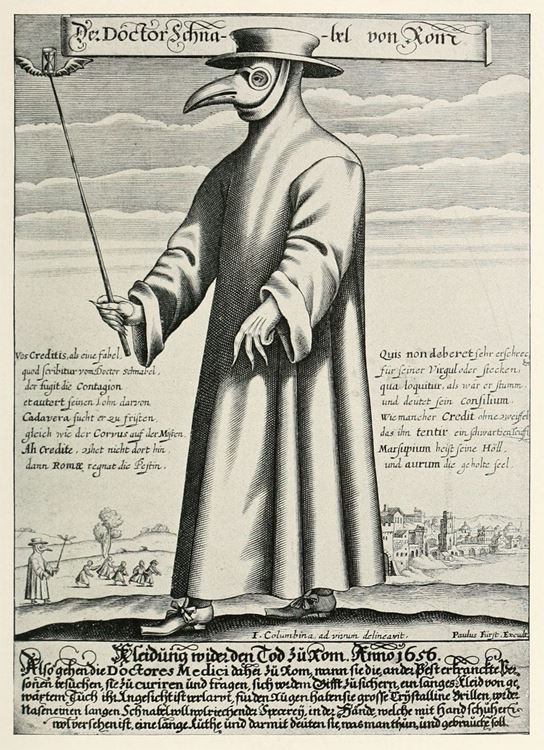
University of California Libraries, USA.
A plague doctor was a medical physician who treated victims of the plague. In times of epidemics, these physicians were specifically hired by towns where the plague had taken hold. Since the city was paying their salary, they treated everyone: both the wealthy and the poor. The largest plague epidemic was the Black Death in Europe in the 14th century. The large losses of people in a town created an economic disaster, so community plague doctors were considered quite valuable and were given special privileges; for example, plague doctors were freely allowed to perform autopsies to research a cure for the plague.
The Four Horsemen of The Apocalypse / c.1496 - Albrecht Dürer
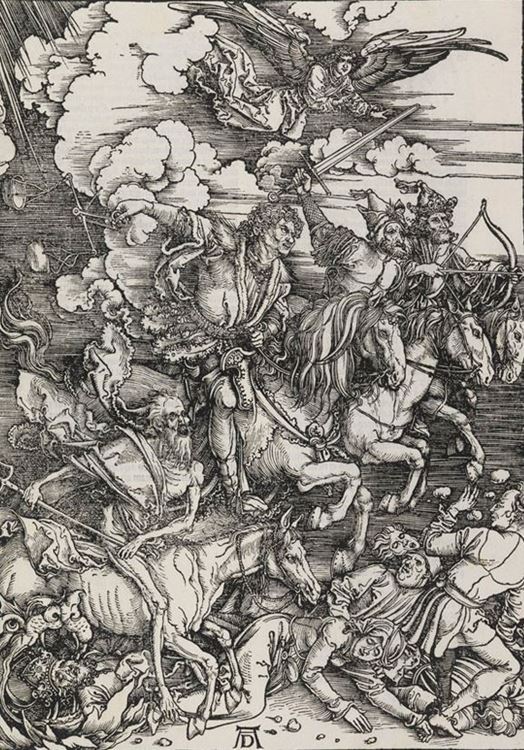
Staatliche Kunsthalle, Karlsruhe, Germany.
Four horsemen believed to emerge as a sign of the Apocalypse in Christianity. According to the Apocalyptic chapter in the New Testament, also known as the Book of Revelation, they will appear with the opening of seven seals that will bring the Doomsday disasters. According to some academics, the white horse and its rider symbolize Jesus, the red horse, and its rider symbolize blood and war, the black horse and rider famine, and the pale-colored horse and rider symbolize epidemic diseases and death.
The Triumph of Death / c. 1562 - Pieter Bruegel The Elder
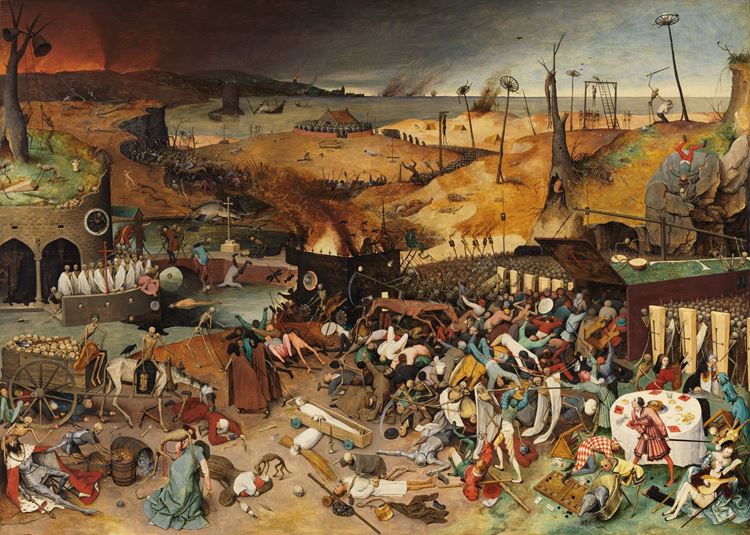
Museo del Prado, Madrid, Spain.
The painting by Flemish Renaissance master Pieter Bruegel in 1562 shows how the Black Death (Plague) lived in a European town. This work depicts that all living things, including humans and animals, have died.
The Frailty of Human Life / c.1656 - Salvator Rosa
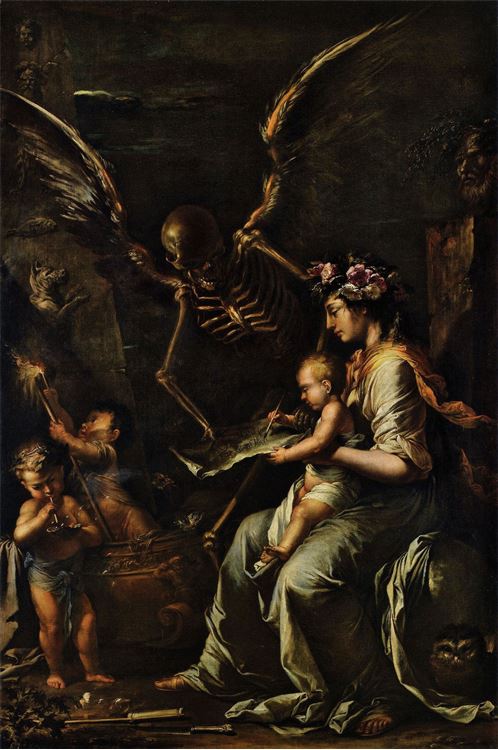
The Fitzwilliam Museum, Cambridge, UK.
Painter Salvator Rosa survived the plague epidemic in 1656, but she lost with her brother and sister, her husband and five children. The painter wanted to explain the pain he experienced with his painting. In the picture, the Black Death (skeleton) leads the child to write on the parchment. On the parchment, it says "Conceptio Culpa, Nasci Pena, Labor Vita, Necesse Mori". In other words, "Conceiving is a sin, Birth is pain, Life is labor, Death is a necessity."
The Triumph of Death with The Dance of Death / 15th century - Giacomo Borlone de Burchis
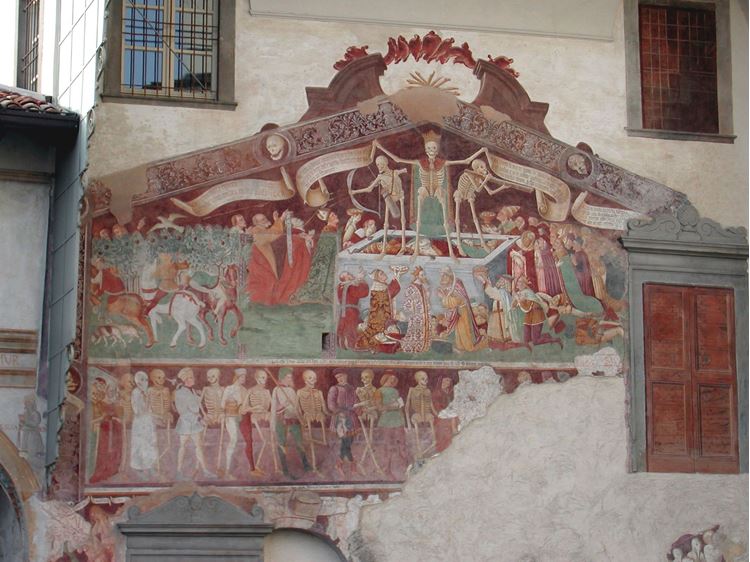
Oratorio dei Disciplini in Clusone, Italy.
This work, made by Italian artist Giacomo Borlone de Burchis in the 15th century, was inspired by the plague disease called "Black Death". The encounter between the living and the dead is explained.
The Virgin Appears to The Plague Victims / 1666 - Antonio Zanchi
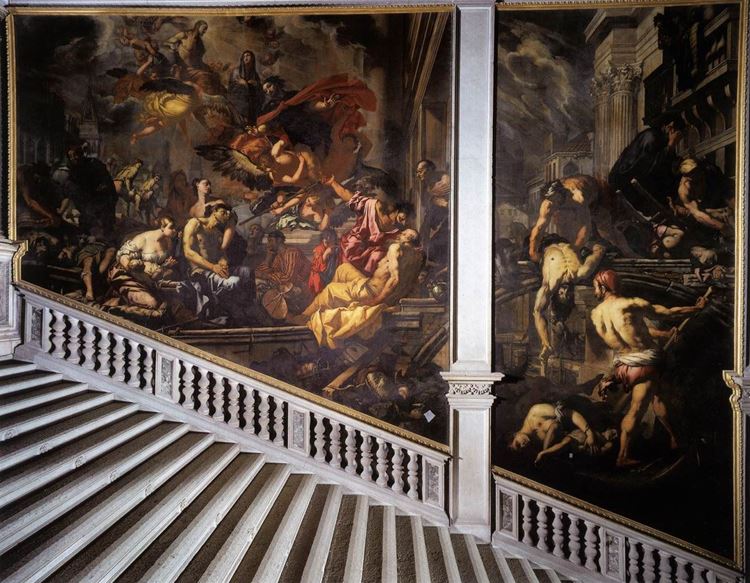
Scuola Grande di San Rocco, Venice, Italy.
San Rocco or Saint Roch miraculously survived the infection. For this reason, he was considered a plague protector. In its mural, it evokes the terrible plague that caused a lot of trouble among the population of Venice.
Saint Sebastian / c.1623 - Gerrit van Honthorst
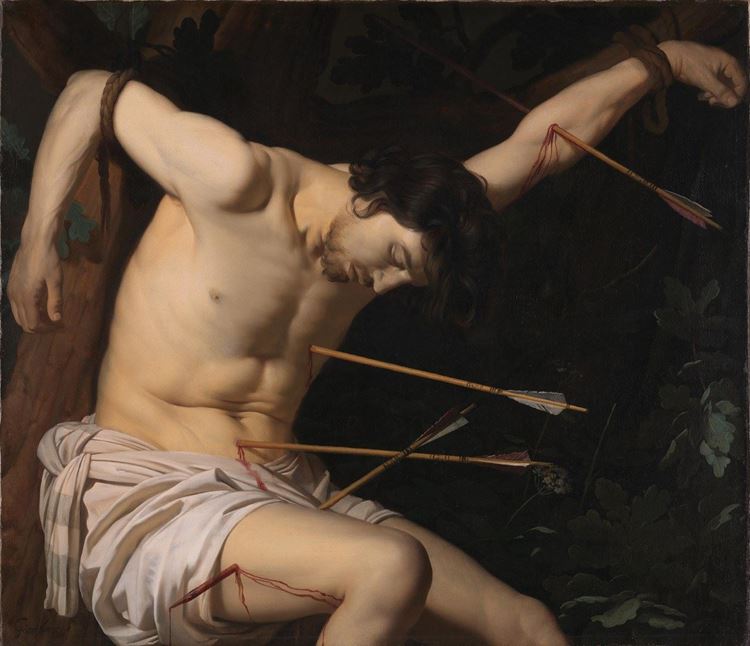
The National Gallery Museum, London, UK.
Sebastian, a Roman soldier, was convicted to be shot with arrows at close range because he had Christian beliefs. Sebastian was regarded as a patron saint and a homoerotic symbol against the plague. The plague epidemic started in the Netherlands in the 1620s. The painter was able to combine both elements in his painting by Honthorst. This painting depicted the saint with passion as an inspiring hero of miraculous survival.
Pietà / c.1576 - Tiziano Vecellio

Gallerie dell'Accademia, Venice, Italy.
In this mural, depicting Titan, he showed himself and his son as praying for an Old man to save his son and himself from the black death (Plague) epidemic in this despair. Titian and his son Orazio both died from the plague of 1576.
The Seven Works of Mercy / 1607 - Caravaggio
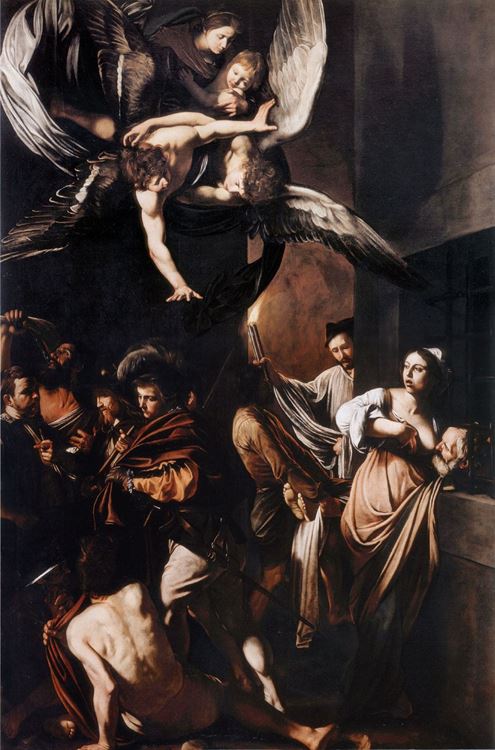
Pio Monte della Misericordia, Naples, Italy.
One of the saddest consequences of the epidemic in Europe was that the dead were not properly buried. The painter Caravaggio portrayed it as a fundamental “mercy” of the Christian community, which lived on the streets of Naples and helped gather the corpses. Witnessing the Black Plague epidemic in Florence, Giovanni Boccaccio explains that mourning is impossible and corpses are thrown into the street. Plague pits filled with corpses provide proof that the dead were thrown into mass graves.
Plague and the Medieval Triumph of Death / c. 1446
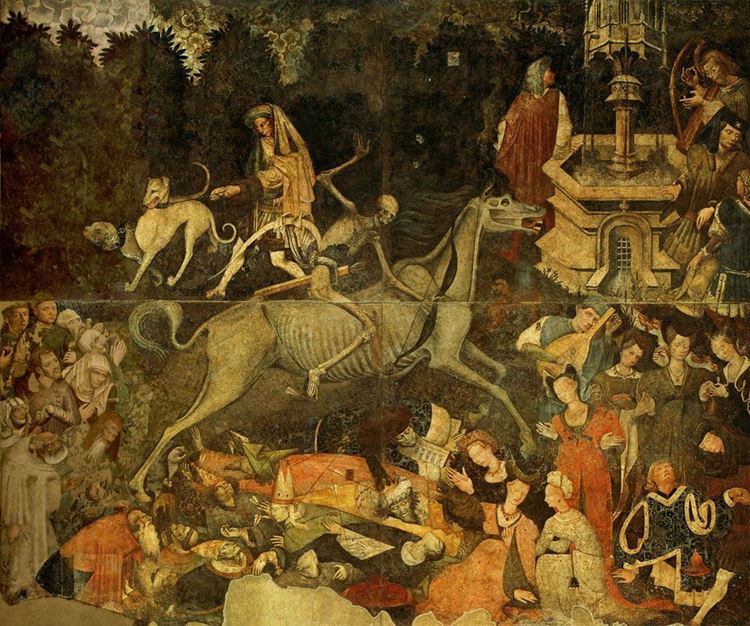
Palazzo Abatellis, Palermo, Italy.
A fresco painting that is not known who the painter is. It is probably thought that a Catalan or Provençal artist did it. It is currently on display at the Palazzo Abatellis palace in Palermo. It is possible to see the outbreak called Black Death in the picture. In the mural painting, the skeleton depicted on a pale horse shoots people with an arrow in his hand.
Time and Death / 1727 - Caterina de Julianis
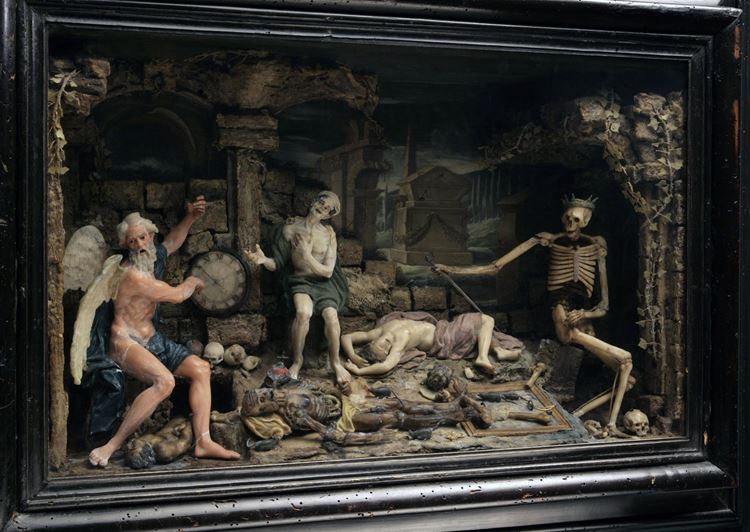
Victoria And Albert Museum, London, UK.
Bubonic plague subsided in Europe in the 18th century. The last major demolitions took place in Marseille in 1720. This wax horror, made by a nun in Naples, shows how memory continues into an entire landscape destroyed by death.
Saint Sebastian Interceding for The Plague Stricken / c.1497 - Josse Lieferinxe

The Walters Art Gallery, Baltimore, USA.
In the painting, the artist wanted to explain the great plague epidemic that occurred in Italy and the people affected by the epidemic. In the upper part of the picture, Saint Sebastian is depicted praying in front of the god for the plague.
St Gennaro Liberates Naples from The Plague / c. 1660 - Luca Giordano
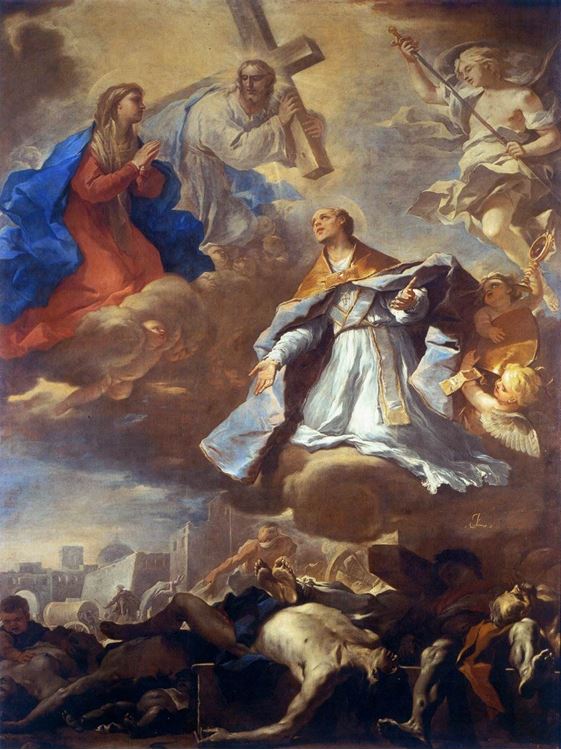
Santa Maria del Pianto, Napoli, Italy.
The painter depicted Naples' patron saint, St Gennaro, in the center of the painting for the church built after the terrible plague of 1656.
Plague / 1898 - Arnold Böcklin
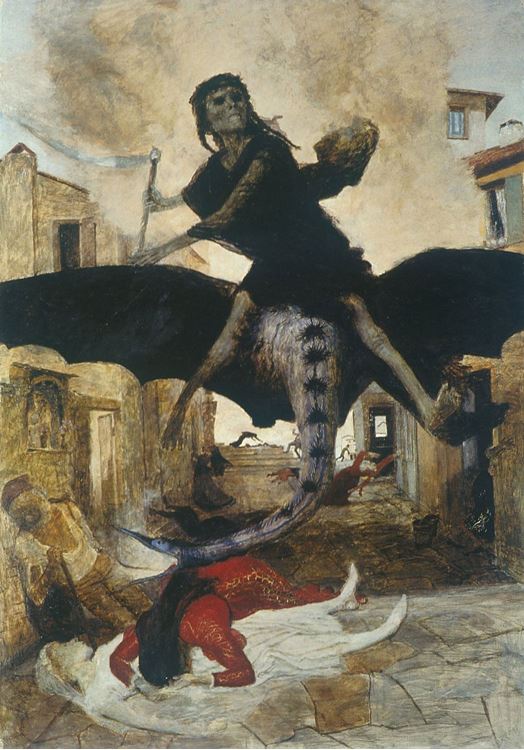
Kunstmuseum Basel Museum, Basel, Switzerland.
The picture illustrates the artist's obsession with war, pest, and death nightmares, showing the Death (Plague) in a winged creature roaming the street of a medieval town.
Self-Portrait with The Spanish Flu / 1919 - Edvard Munch
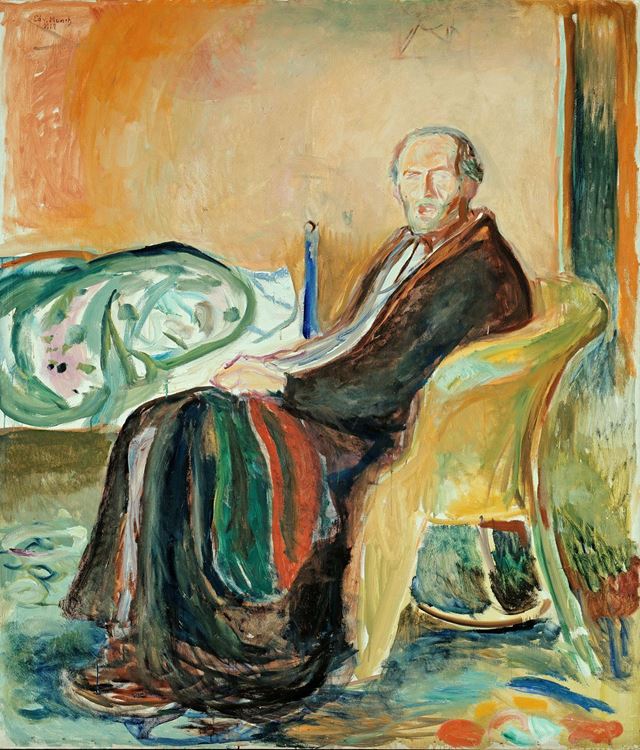
National Gallery, Oslo, Norway.
Edward Munch was caught in Spanish flu. He made many paintings and sketches at that time. In this self-portrait in 1919, the painter depicted his closeness to death. Edward Munch managed to overcome this disease later on.
The Family / 1918 - Egon Schiele
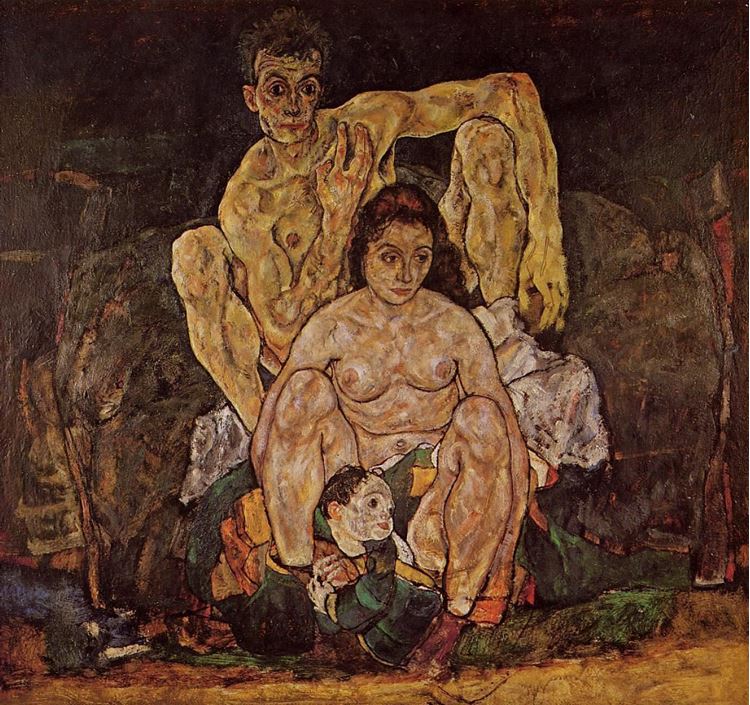
Österreichische Galerie Belvedere, Vienna, Austria.
One of the latest paintings by Egon Schiele, who died of the Spanish flu, one of the terrible epidemics of the 20th century, is "The Family". In this work, Schiele portrays himself, his spouse and unborn child who died of the flu. The artist's wife, Edith, died in Spanish flu during the 6th month of her pregnancy. It is known that Schiele made this work three days after his wife's death.
Bibliography;












